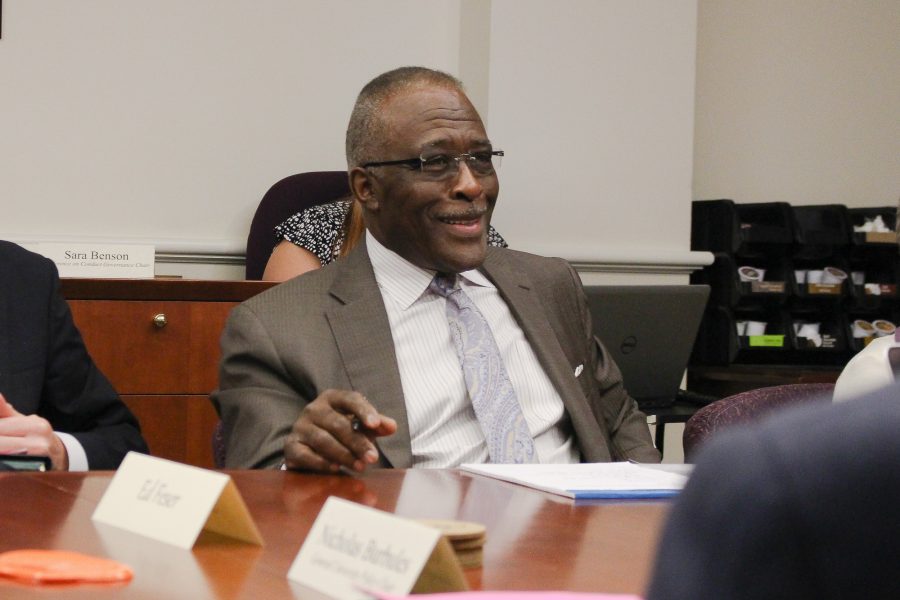Chancellor calls for review of diversity programs
Chancellor Robert Jones attends his first Senate Executive Commitee meeting in the English Building on Monday.
November 3, 2016
While the University funnels millions of dollars into diversity-based programs, Chancellor Robert Jones is calling for a self-study to ensure the campus is getting a return on investment, synergy between the programs and an inclusive climate.
The programs help to recruit diverse faculty and students, and also promote a welcome climate for all backgrounds, Associate Chancellor for Diversity Assata Zerai said.
Jones, who began as chancellor in late September, is the University’s first African American chancellor. On his first day in office, he said he believes the campus has wonderful efforts, but he was not convinced they were aligned to create synergy.
“What are the gaps? Are we getting the maximum return on investments that we’ve made?” he said.
Programs on campus include the Office of Diversity, Equity and Access, all the cultural houses on campus, faculty hiring initiatives and scholarships such as the Presidential Award Program and Illinois Promise. Zerai said she hopes they can add additional resources to areas where they find gaps.
Get The Daily Illini in your inbox!
Jones said he hopes to see how each program is structured, how they connect to each other across campus and what metrics they can use to effectively spend the money they receive.
The self-study will be led by Zerai and Interim Provost Ed Feser and begin this month. She hopes to have the study completed by the end of the semester and then an external review team will be invited to look and suggest any changes next year.
The review team has not been selected yet, but will include people who have worked in comparable universities in equal opportunity, affirmative action, Title IX and diversity departments. It will not be a firm, but instead senior diversity officers from other institutions, Zerai said.
Reviewers will be paid for any expenses and receive an honorarium between $1,000 to $2,000, according to the Office of the Provost.
Jones said his background in higher education diversity efforts for the last 30 years gave him an assumption that the campus was not working as efficiently. He led efforts at both the University of Minnesota and the University at Albany.
He believes the University devotes more funding to diversity and equity than any other institution he knows of. Zerai said the majority of the money goes toward scholarships.
Jones said the exact number of how much money is spent toward programming is unknown and the total amount currently includes scholarship fees. He would like to divide out the scholarships to see what is being spent on programming.
Jones heard concerns from students, staff and administrators about the decentralized programming when he was announced to serve as the next chancellor. He hopes to have both on-the-ground individualized ownership and central accountability.
“The structure is very decentralized and that may or may not be anything wrong with it. I’m not saying that it’s wrong,” he said. “[But] you can’t drive central goals and objectives unless someone is owning it on the ground. It just doesn’t work. That has been my experience. If you try to do everything centrally, you’re not going to get everywhere.”
Jones said with no accountability other than institutional goals and objectives, programs may lack synergy.
In comparison to other universities, Zerai said the programs offered are very strong and she believes it shows in the increased numbers of underrepresented students on campus.
African American enrollment increased this year by 9.8 percent — from 1,786 to 1,961 students — and Latino enrollment rose 11.2 percent — from 3,110 to 3,457 students.
Additionally, six-year graduation rates gaps are closing in. Over the last 10 years, African American and Hispanic graduate rates were much lower than White and Asian rates, but the gaps are getting smaller.
“We are already excellent, but any unit can always improve and we want to stay at the front end and looking forward,” Zerai said.
@MeganAsh_Jones







